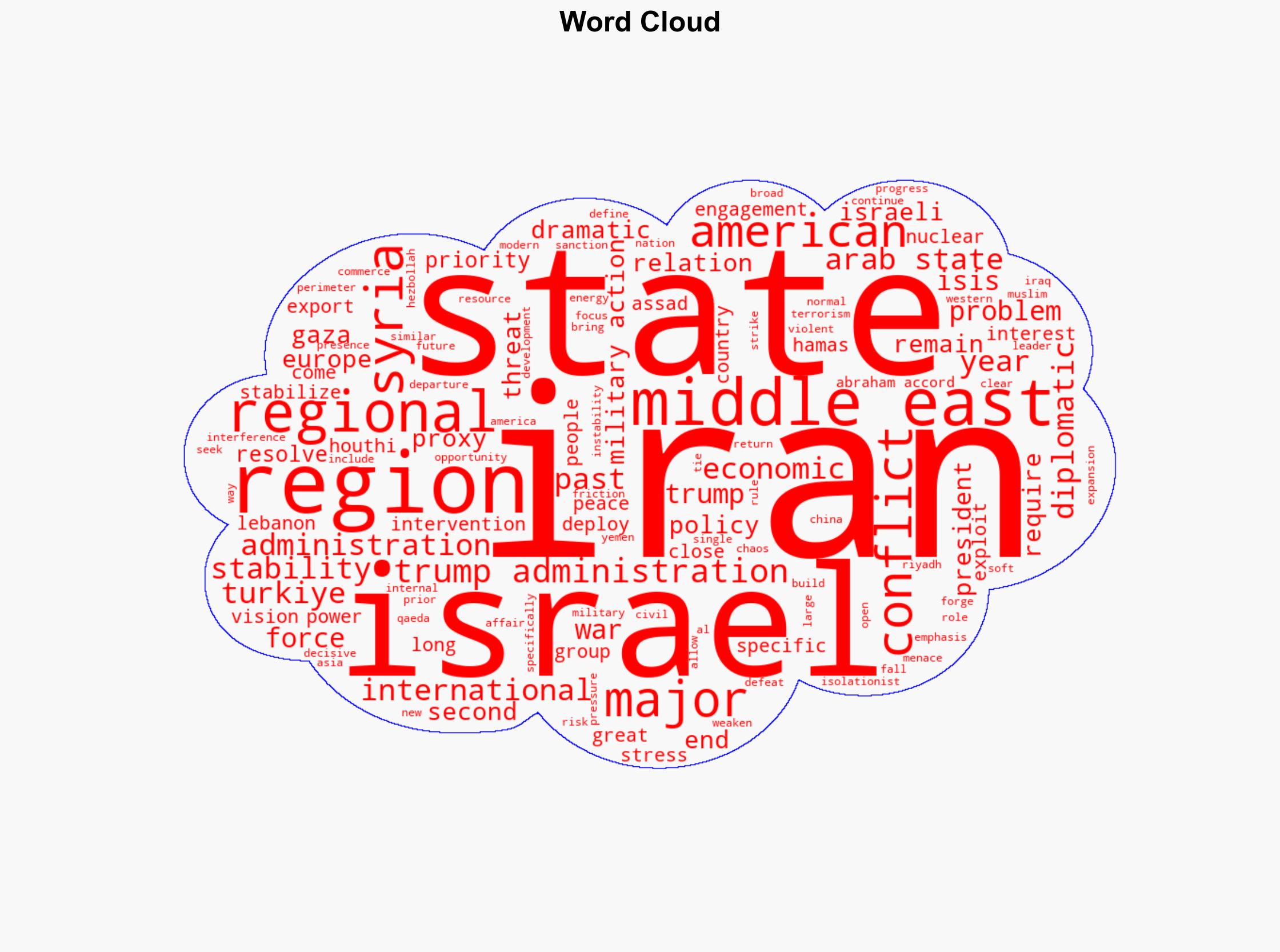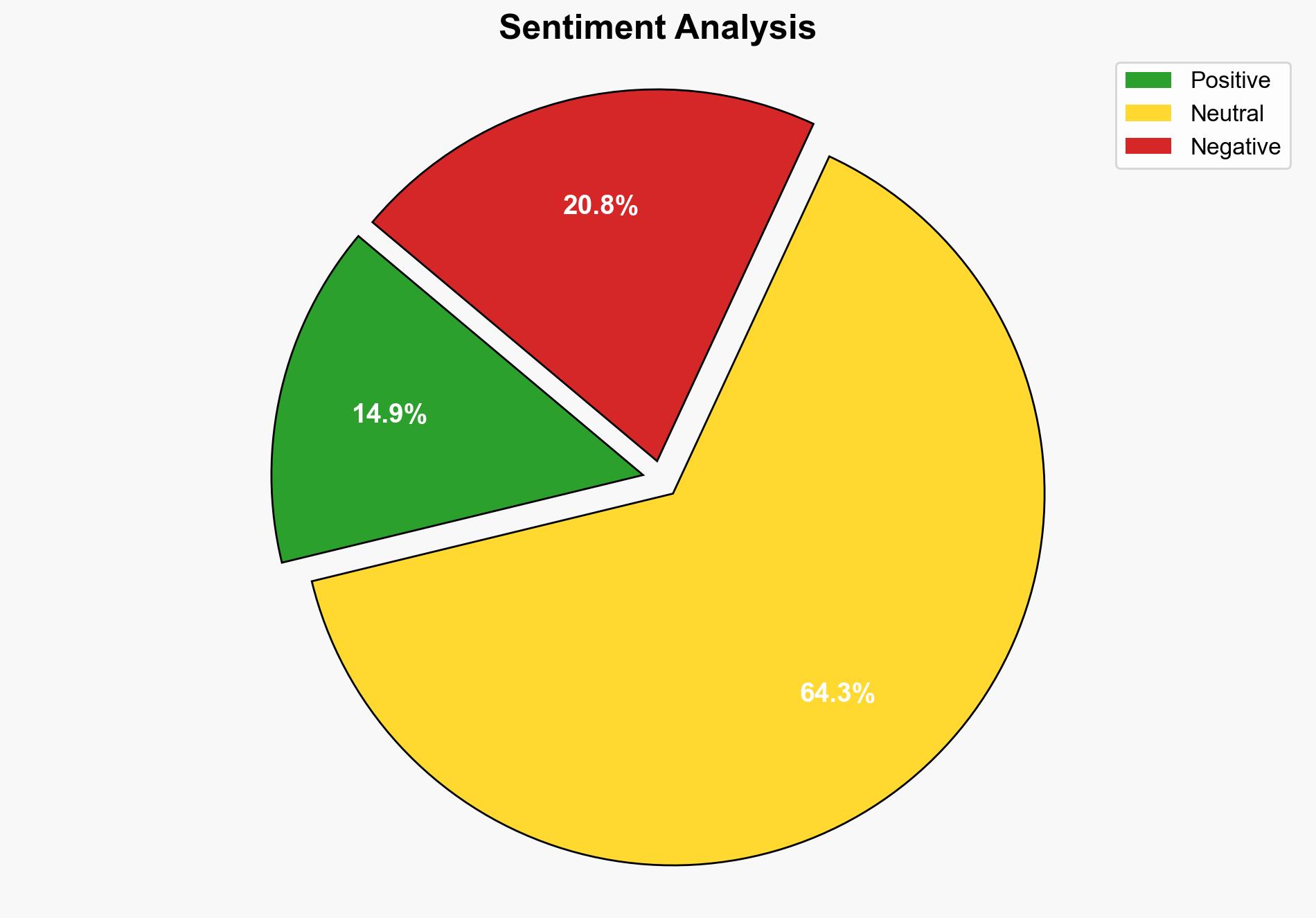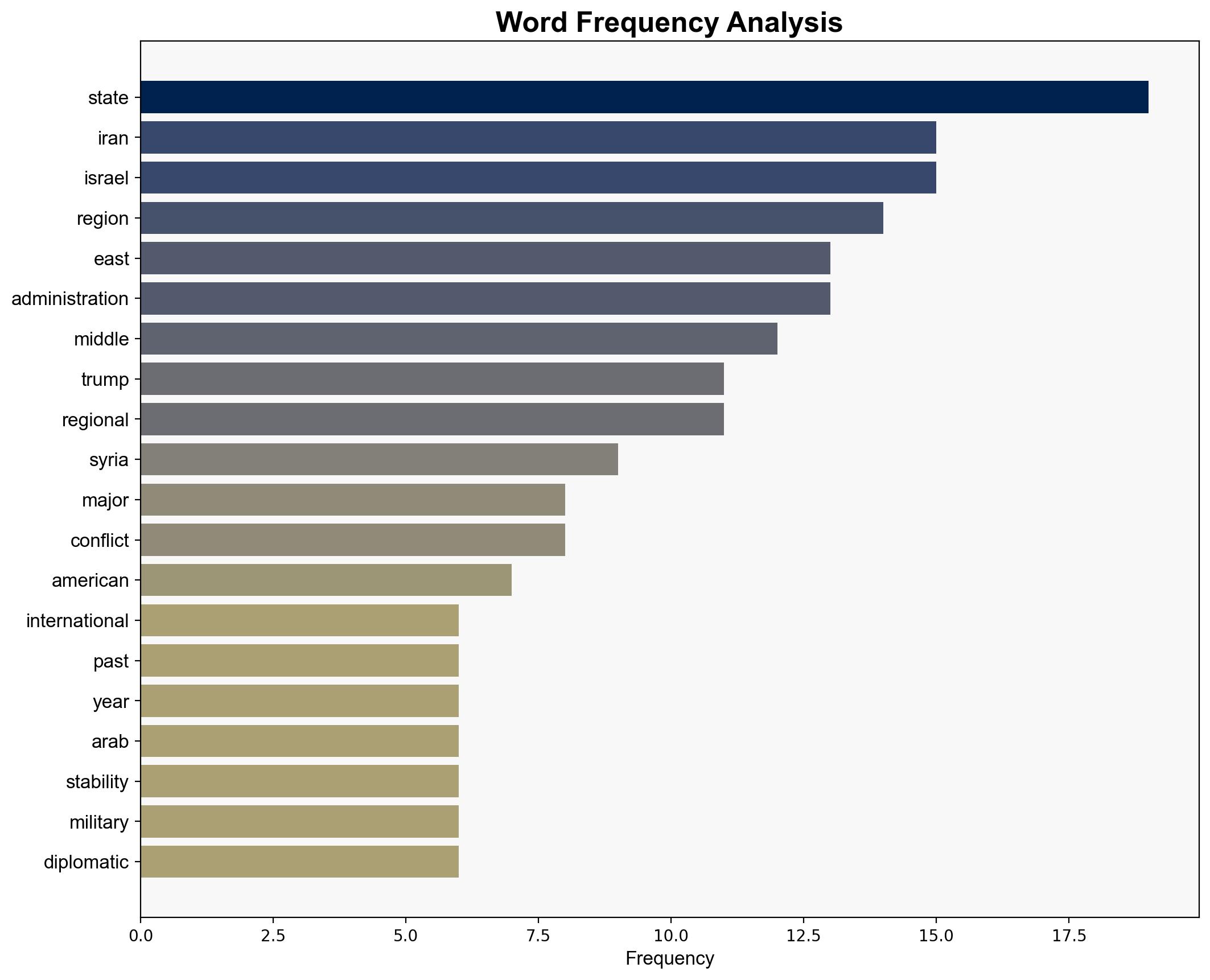Trumps Gulf Trip Confirming And Upending US Middle East Policy – Hoover.org
Published on: 2025-09-09
Intelligence Report: Trumps Gulf Trip Confirming And Upending US Middle East Policy – Hoover.org
1. BLUF (Bottom Line Up Front)
The analysis suggests a moderate confidence level that the Trump administration’s Middle East policy is primarily focused on reducing direct U.S. involvement while leveraging regional partnerships to maintain stability. The most supported hypothesis is that the administration aims to shift from interventionist strategies to a more commerce-driven approach, aligning with regional powers to counterbalance Iran. Recommended action includes enhancing diplomatic ties with regional allies and monitoring Iran’s responses to these shifts.
2. Competing Hypotheses
1. **Hypothesis A**: The Trump administration is pursuing a strategy of reduced direct military involvement in the Middle East, focusing instead on building regional alliances and economic partnerships to maintain stability and counter Iran.
2. **Hypothesis B**: The administration’s actions are primarily driven by an isolationist agenda, deprioritizing the Middle East in favor of addressing challenges in other regions like China and Europe, potentially leading to a power vacuum that could destabilize the region.
Using ACH 2.0, Hypothesis A is better supported due to the administration’s emphasis on the Abraham Accords and regional partnerships, which indicate a strategic shift rather than complete disengagement.
3. Key Assumptions and Red Flags
– **Assumptions**: Hypothesis A assumes regional partners are capable and willing to fill the void left by reduced U.S. involvement. Hypothesis B assumes that the U.S. can afford to deprioritize the Middle East without significant repercussions.
– **Red Flags**: Lack of clarity on the long-term sustainability of regional alliances and the potential for Iran to exploit any perceived U.S. withdrawal.
– **Blind Spots**: Potential underestimation of non-state actors’ influence in the region and their ability to destabilize alliances.
4. Implications and Strategic Risks
– **Geopolitical Risks**: A reduced U.S. presence could embolden Iran and its proxies, leading to increased regional instability.
– **Economic Risks**: Shifts towards commerce-driven policies may not address underlying security concerns, potentially affecting oil markets and global trade.
– **Psychological Risks**: Perceptions of U.S. withdrawal could undermine confidence among allies and embolden adversaries.
5. Recommendations and Outlook
- Enhance intelligence-sharing and military cooperation with regional allies to mitigate risks of destabilization.
- Monitor Iran’s activities closely and prepare contingency plans for rapid response to aggression.
- Scenario Projections:
- **Best Case**: Successful regional partnerships lead to stability and economic growth.
- **Worst Case**: Power vacuum leads to increased conflict and economic disruption.
- **Most Likely**: Gradual shift towards regional self-reliance with intermittent U.S. involvement.
6. Key Individuals and Entities
– Donald Trump
– Regional partners involved in the Abraham Accords
– Iranian leadership
7. Thematic Tags
national security threats, regional alliances, economic partnerships, counter-Iran strategy




